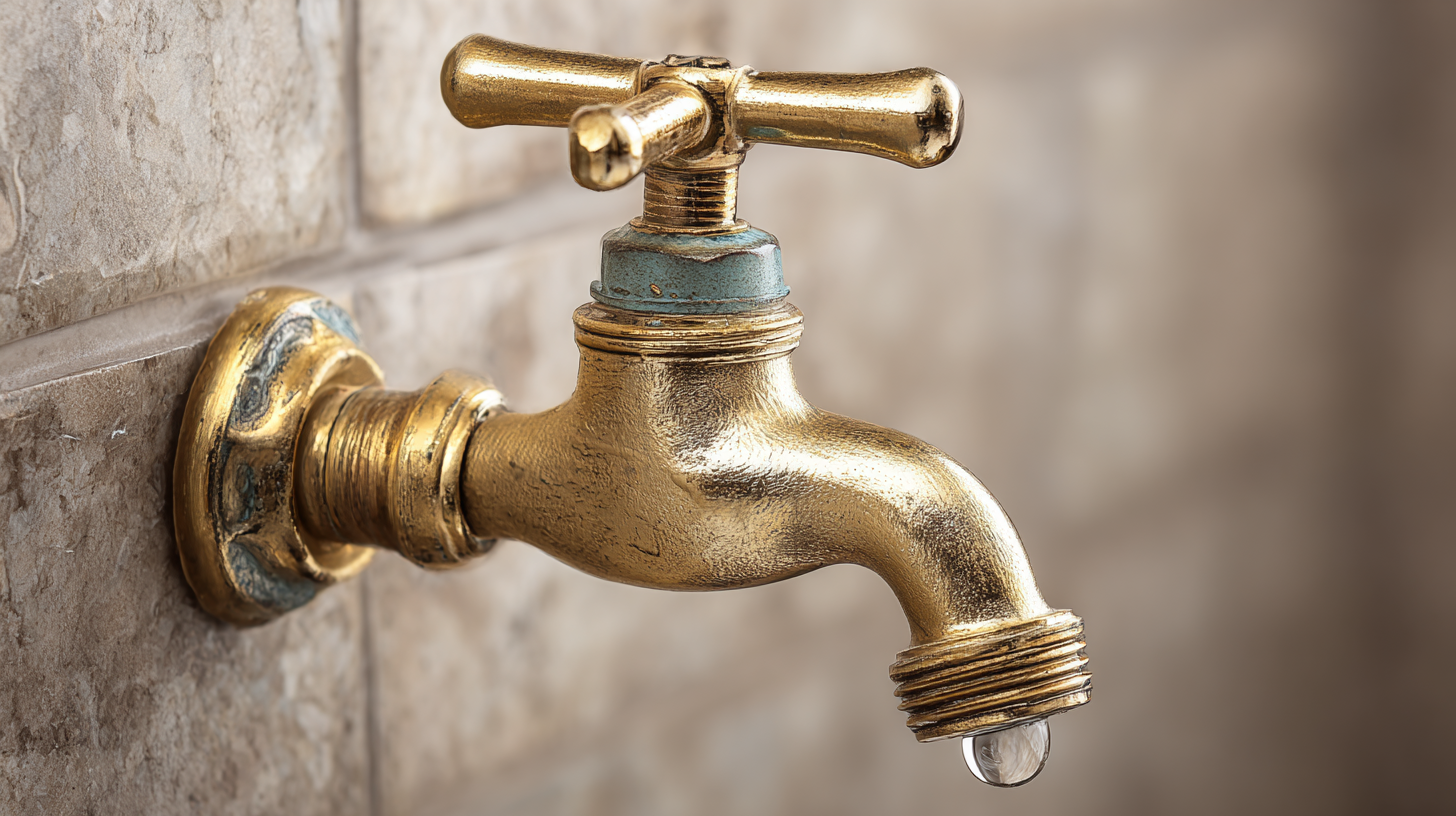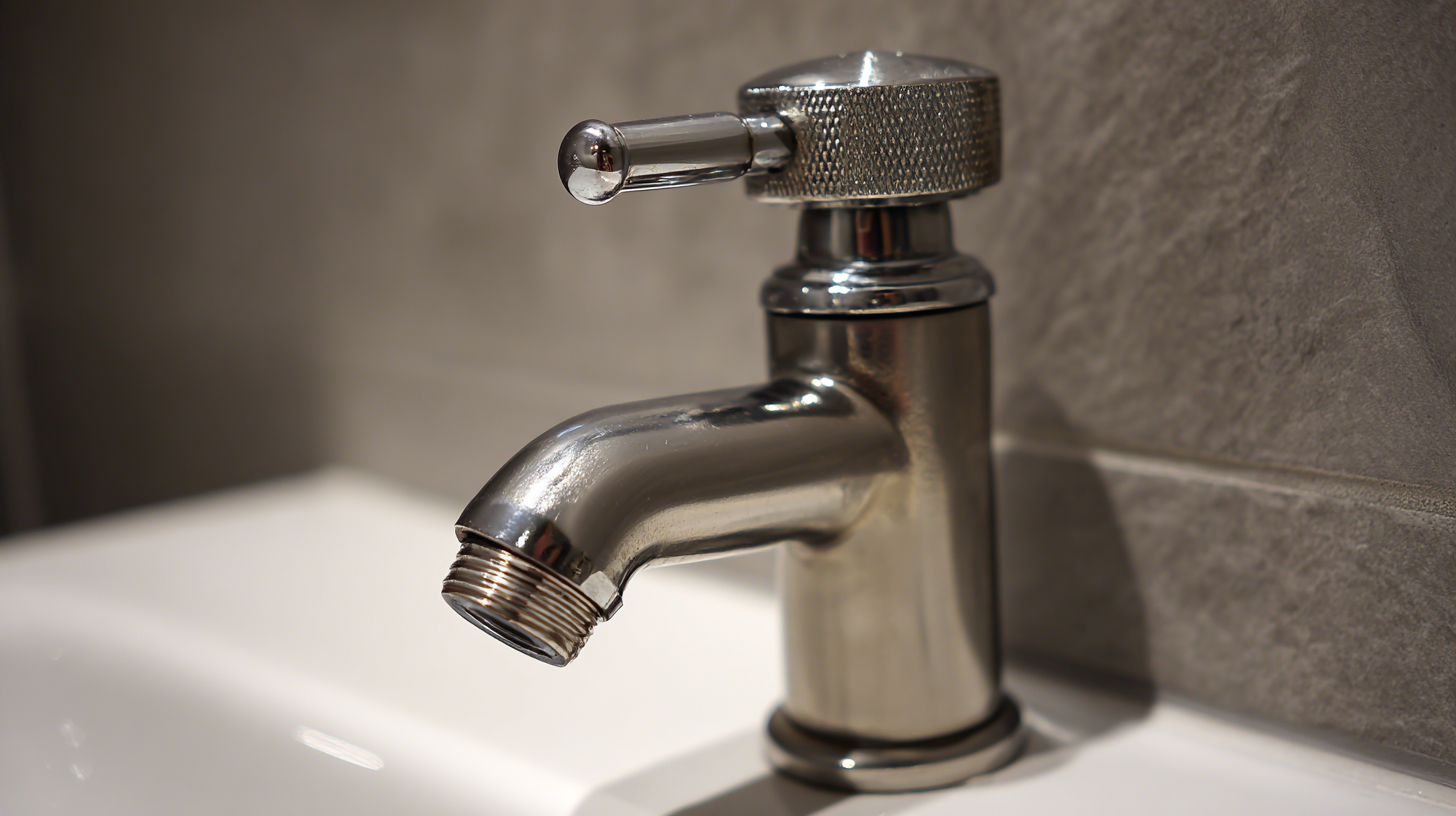 In the intricate world of plumbing, the angle stop valve emerges as an essential component that can significantly enhance the performance and reliability of a plumbing system. According to the American Society of Plumbing Engineers (ASPE), nearly 10% of household water use is attributable to leaks, making efficient water management crucial. Implementing high-quality angle stop valves can drastically reduce wastage and improve control over water flow. These valves, which typically connect supply pipes to fixtures, are pivotal in delivering precise flow regulation and ensuring the longevity of plumbing installations. A study by the Plumbing Manufacturers International (PMI) indicates that upgrading to the best angle stop valves can increase system efficiency by up to 30%, reducing repair costs and enhancing user satisfaction. With such compelling data, the importance of investing in superior angle stop valves becomes undeniable, promising a transformative impact on any plumbing system.
In the intricate world of plumbing, the angle stop valve emerges as an essential component that can significantly enhance the performance and reliability of a plumbing system. According to the American Society of Plumbing Engineers (ASPE), nearly 10% of household water use is attributable to leaks, making efficient water management crucial. Implementing high-quality angle stop valves can drastically reduce wastage and improve control over water flow. These valves, which typically connect supply pipes to fixtures, are pivotal in delivering precise flow regulation and ensuring the longevity of plumbing installations. A study by the Plumbing Manufacturers International (PMI) indicates that upgrading to the best angle stop valves can increase system efficiency by up to 30%, reducing repair costs and enhancing user satisfaction. With such compelling data, the importance of investing in superior angle stop valves becomes undeniable, promising a transformative impact on any plumbing system.
Angle stop valves play a crucial role in modern plumbing systems, providing essential control over water flow in residential and commercial settings. According to a report by the American Society of Plumbing Engineers (ASPE), improperly functioning valves can lead to a staggering 20% of all plumbing system failures, highlighting their importance for reliable water management. These valves enable quick shutoff during emergency repairs or maintenance, minimizing water waste and potential damage to property.
In addition to their functionality, angle stop valves contribute significantly to water efficiency. The Environmental Protection Agency (EPA) estimates that fixing leaks from faulty valves could save approximately 1 trillion gallons of water annually in the U.S. alone. With rising concerns over water conservation and environmental sustainability, integrating high-quality angle stop valves into plumbing systems can lead to improved resource management, reduced utility bills, and increased system longevity. Furthermore, modern designs featuring durable materials and advanced technology ensure that these valves not only meet but exceed current plumbing standards.

When searching for a high-quality angle stop valve, certain key features should take priority in your decision-making process. First and foremost, material matters. Opt for valves made from solid brass or stainless steel, as these materials offer superior durability and resistance to corrosion. This ensures that your plumbing system remains leak-free and efficient in the long run.
Another crucial feature to consider is the valve's design. Look for valves with a smooth operation mechanism that allows for easy turning and flow control. A well-designed angle stop valve not only enhances the user experience but also contributes to a system that operates reliably under varying water pressures. Additionally, ensure the valve is equipped with a clear labeling system indicating the open and closed positions, making it easier to understand and access when needed.
Finally, check for certification stamps or standards compliance. High-quality angle stop valves should adhere to industry standards, reassuring you of their performance and reliability. Investing in a valve with these key features will not only elevate your plumbing system but also provide peace of mind through enhanced performance and longevity.
Angle stop valves play a crucial role in managing water flow and pressure within plumbing systems. By installing these valves, homeowners can enjoy enhanced control over their water supply, making it easier to isolate sections of plumbing for maintenance or repair without affecting the entire system. This localized control minimizes disruption and allows for efficient use of resources, ensuring that water flow remains steady when needed and can be easily shut off during emergencies.
Moreover, angle stop valves contribute significantly to pressure management. They help maintain optimal water pressure throughout the plumbing system, reducing stress on pipes and fixtures. This not only prolongs the lifespan of the plumbing infrastructure but also enhances the performance of appliances reliant on stable water pressure, like dishwashers and washing machines. By effectively regulating water flow, these valves can prevent issues such as leaks and bursts, promoting a more reliable and efficient plumbing experience in the home.
| Reason | Description | Impact on Plumbing System |
|---|---|---|
| Improved Control | Angle stop valves allow precise control of water flow. | Enhances system efficiency and reduces water wastage. |
| Space Saving Design | Compact design suited for tight spaces. | Facilitates easier installation in confined areas. |
| Durability | Made from high-quality materials to withstand pressure. | Reduces the need for frequent repairs or replacements. |
| Minimized Leakage | Designed to prevent leaks effectively. | Helps in maintaining consistent water pressure. |
| Quick Shut-Off | Fast shut-off capability in emergencies. | Enhances safety by allowing immediate water control. |
| Versatile Applications | Suitable for various plumbing systems. | Flexibility in installation reduces complexities. |
| Low Maintenance | Requires minimal maintenance over time. | Saves time and costs in long-term management. |
As we move towards 2025, the plumbing industry is witnessing remarkable advancements in angle stop valve technology that promise to enhance efficiency and sustainability. According to a recent report by the Global Plumbing Industry Association, the market for angle stop valves is projected to grow by 15% annually as manufacturers innovate to meet evolving consumer demands. Key trends indicate a shift towards smart valves that integrate IoT technology, allowing for real-time monitoring and control of water usage. This not only leads to improved water conservation but also enables homeowners to identify leaks and wastage promptly, ultimately lowering utility bills.
Another emerging trend is the increased use of eco-friendly materials in the production of angle stop valves. Research from the Environmental Protection Agency highlights that valves made from sustainable materials can reduce the carbon footprint of plumbing systems significantly. Moreover, advancements in manufacturing processes, such as precision engineering and 3D printing, are making it easier to produce high-quality valves that withstand corrosion and provide longer service life. These innovations are not merely enhancements; they represent a crucial shift in how we approach plumbing infrastructure, aligning with the broader goals of sustainability and smart home technology.
Upgrading to the best angle stop valves can significantly enhance your plumbing system by addressing common issues that often go unnoticed. One prevalent problem is the slow leak that can develop in older valves, which may not only waste water but also lead to higher utility bills. According to industry reports, nearly 20% of residential water usage is attributed to leaks, which upgrading to high-quality angle stop valves can effectively mitigate. These valves provide a tighter seal, ensuring that your plumbing remains efficient and reducing the risk of costly water damage.

Another crucial aspect of plumbing performance lies in the control of water flow and temperature. With advanced angle stop valves, homeowners can experience better regulation, solving issues such as fluctuating water temperatures during showers or baths. Data suggests that improper flow management can lead to an increase in energy consumption by up to 15%. By implementing the latest technology in angle stop valves, these concerns can not only be alleviated but also contribute to energy savings, making your plumbing system not only more reliable but also more environmentally friendly.
